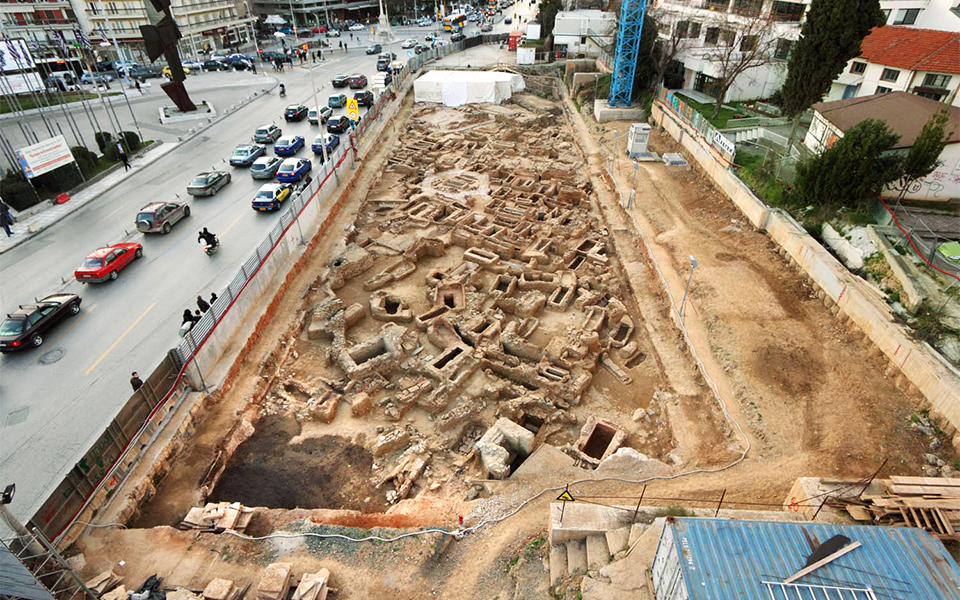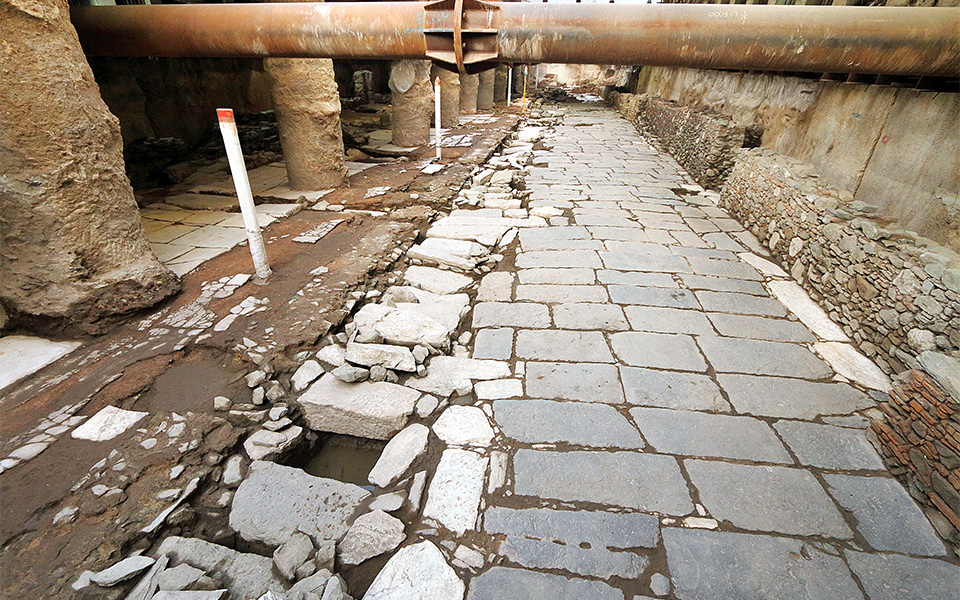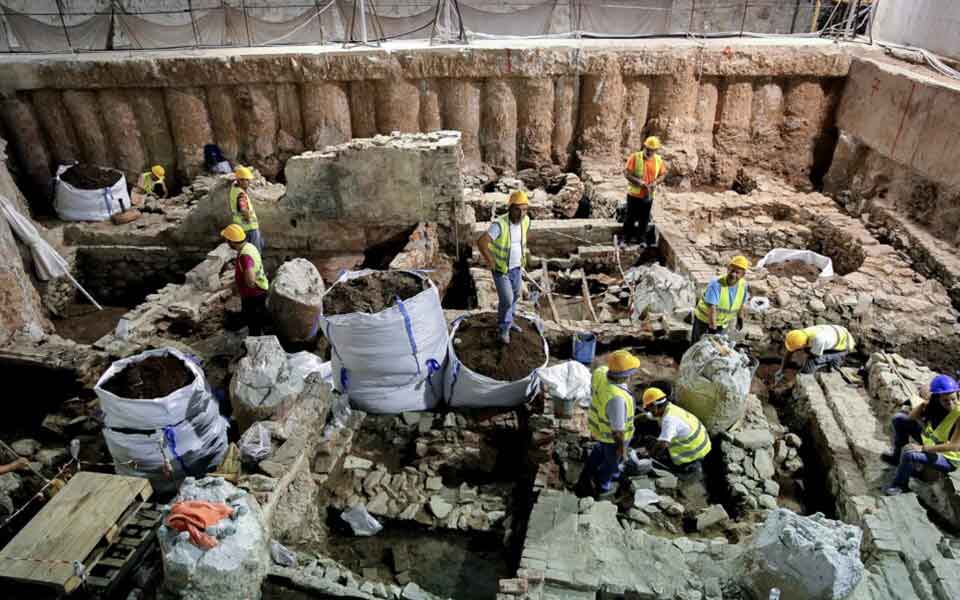Years of archaeological excavations for Thessaloniki’s new metro system have brought to light a staggering wealth of antiquities, painstakingly recovered from multiple layers of the city’s rich, historical past.
More than 300,000 artifacts, many dating back to the 4th century BC, have been excavated from 6 of the 12 station sites currently under construction. These include Aghia Sofia, Venizelou, Syntrivani, Panepistimio, Fleming, and Amaxostasio Plakas.
“All the stations that yielded antiquities, top among which were Venizelou and Aghia Sofia, will also be museums, which, along with two new exhibition venues, will showcase the most important of the 300,000 finds made in total during what was the biggest archaeological research project ever held in Greece,” reported Culture Minister Lina Mendoni at a press conference on Wednesday. “While all the finds are valuable, not all are exhibitable,” she added.

© Hellenic Ministry of Culture and Sports
Many of the findings date back to the Hellenistic period (323-31 BC), providing crucial insight into the origins and early development of the city’s urban fabric.
Major discoveries during the course of the construction works include a large Roman-era cemetery near Fleming station, dating the to the 2nd to 4th centuries AD, revealing a previously unknown settlement on the outskirts of the ancient city. The discovery of another cemetery while digging for the Syntrivani and Panepistimio stations, located to the east of the city, unearthed thousands of grave sites dating from the Hellenistic period to Late Antiquity. Many contained precious offerings to the dead, including ceramic and glass vases, clay figurines, gold and silver jewelry, and coins.

© Hellenic Ministry of Culture and Sports
Dozens of artifacts will be put on be put on display at each of the 6 metro stations, announced Transport Minister Konstantinos-Achillea Karamanlis at the same press conference, with the largest exhibition at Venizelos station.
The controversial removal of antiquities from that station was completed on July 31 of this year, and their repositioning is expected to take place in the first quarter of 2023.
Linda Mendoni said of their relocation: “[Venizelos station] is the country’s largest archaeological site being created in the context of an international technical project.” She added: “The temporary detachment of the antiquities has made it possible to uncover artifacts from earlier historical periods, which could not have been studied in any other way or to such an extent. Their discovery and subsequent study has confirmed written sources that describe the disasters suffered by the city.”
Two new museums
During the press conference, the Culture Minister also announced that the two museum spaces will be created to exhibit the majority of the finds. The first museum, dedicated to Thessaloniki’s history, will be located at the former Pavlos Melas military base, inside the Metropolitan Park, while the second will be located in front of the Library of the Aristotle University of Thessaloniki.
A thorough architectural and museological study for the Pavlos Melas site has already been completed and approved by the Central Council of Museums, and will involve the restoration of building A3. Funds for the project will be drawn from the National Strategic Reference Framework (NSRF) for the period 2021-2027.
Meanwhile, studies will proceed for the construction of the second museum in front of the University Library, covering a space of 5,000 square meters. The completed museum will house a section of the 77-meter-long “Decumanus Maximus” Roman road, discovered at the Aghia Sofia station. It is anticipated that the construction of the museum will take up to 6 years.












